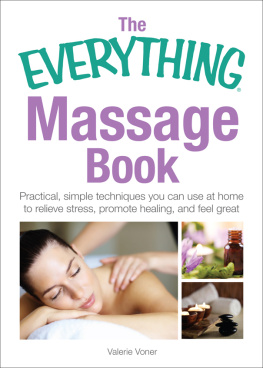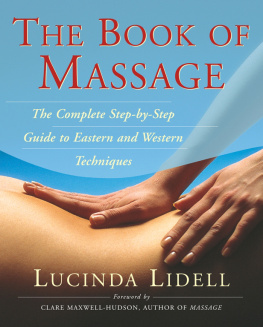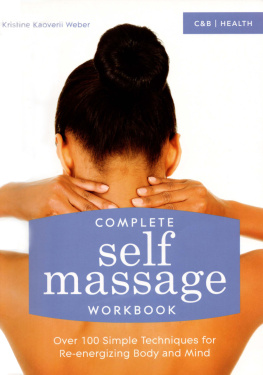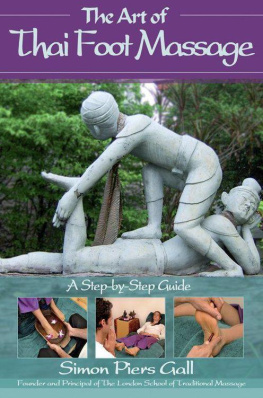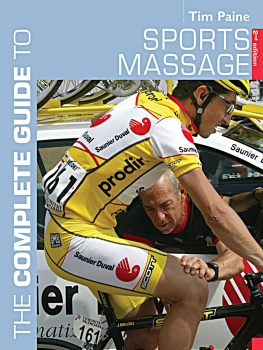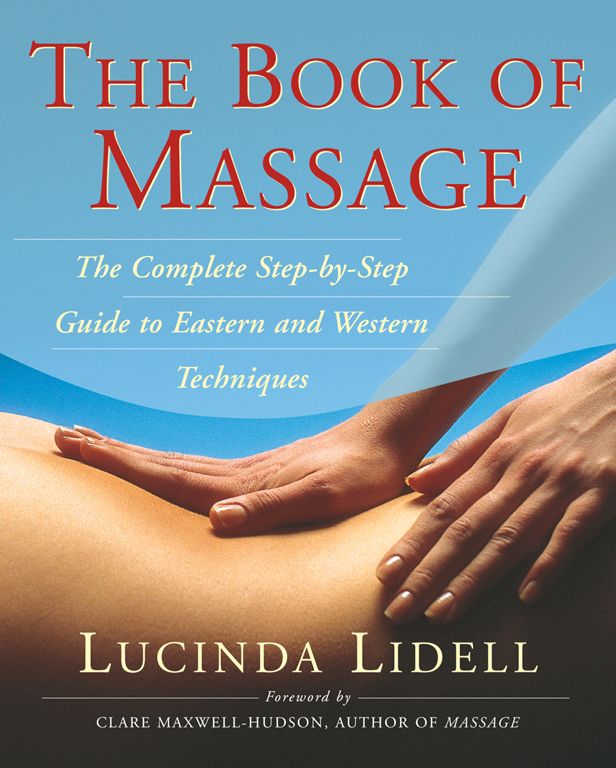
Thank you for purchasing this Touchstone eBook.
Sign up for our newsletter and receive special offers, access to bonus content, and info on the latest new releases and other great eBooks from Touchstone and Simon & Schuster.
C LICK H ERE T O S IGN U P
or visit us online to sign up at
eBookNews.SimonandSchuster.com
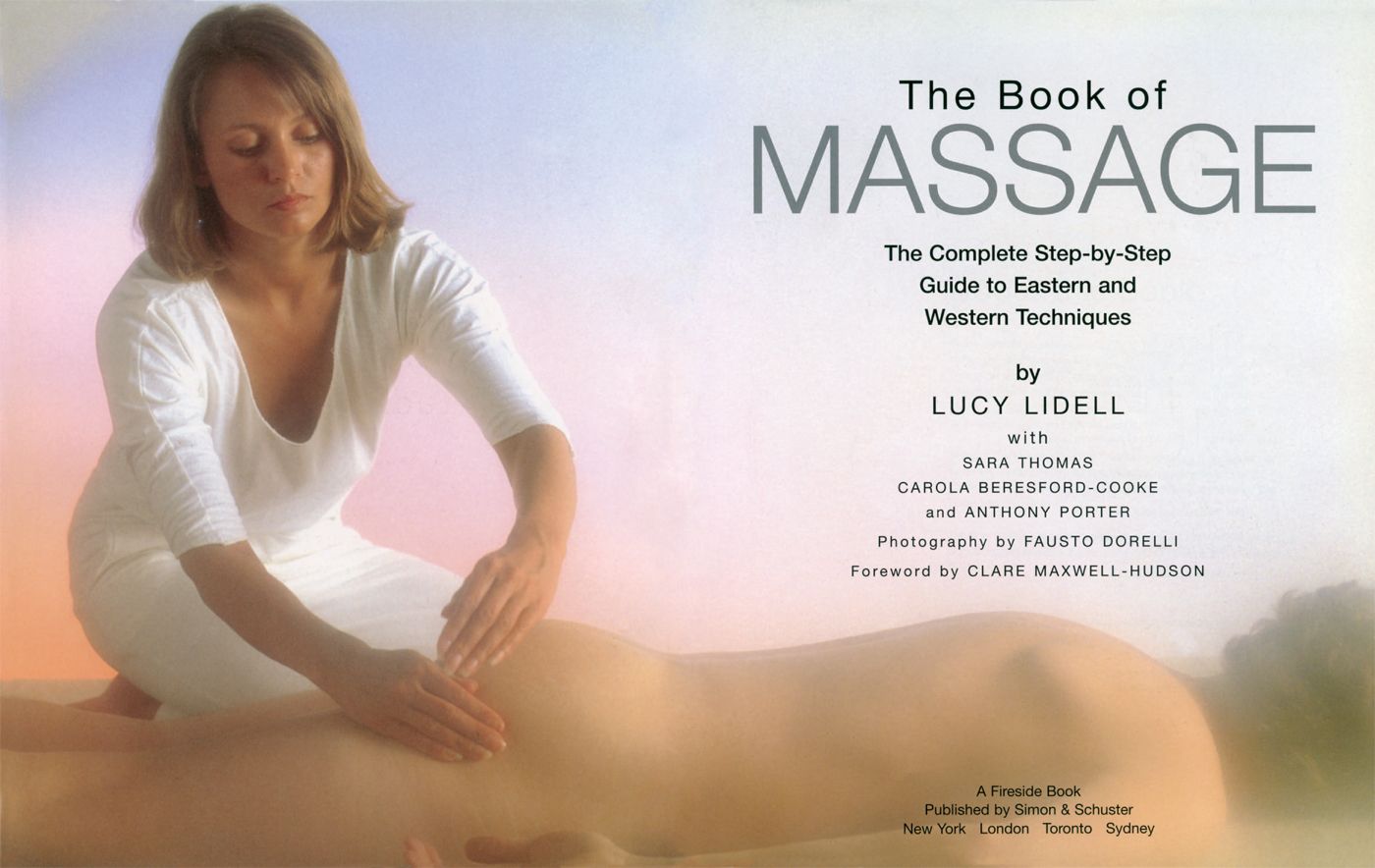
Contents
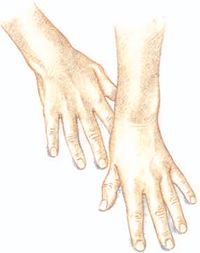
About this book...
Three different therapies are taught in The New Book of Massage massage, shiatsu and reflexology. Whichever you decide to learn, please be sure to read Beginning (pp. 65), which shows you how to apply the techniques to a range of ages and special needs.
Note : In the Massage section, receivers are shown naked, since the book is intended mainly for use with partners and close friends. In professional massage, you would always use towels to cover the body (see pp. 9).
Caution : Always consult a doctor if you are in doubt about a medical condition, and observe the cautions and contraindications given in the book.
Foreword
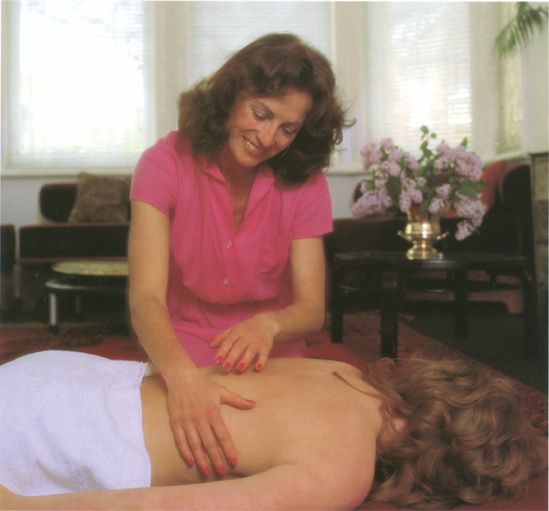
Massage is perhaps the oldest and simplest of all medical treatments. In traditional cultures, especially in the East, it is accepted as natural that people of all ages can benefit from regular massage. But here in the West, although its value has always been recognized in the world of sport, its use has only quite recently spread to other fields.
All too often, we tend to be afraid to touch one another. Yet increasingly, research is proving the extraordinary effectiveness of touch and touch is the core of massage. In a recent survey, the simple act of massage was shown to have improved patients morale, and hastened their rate of recovery. I myself have found this to be true in my own hospital work.
For massage, as one discovers during its practice, is not only physical. It contains much of psychology. Understanding of the person under your hands develops through empathy. As every good therapist in the field knows, this is rooted in the inward resolution: I am here to help.
One unique advantage is that massage is as pleasant to give as it is to receive. It has been scientifically established that stroking a household pet has a relaxing effect and lowers ones blood pressure. Stroking people does the same.
Massage can be stimulating or soothing, depending on the speed and depth of your strokes. This is why it can make a person feel alert and ready to run in a marathon or, conversely, relaxed and sleepy. It can relieve tension, soothe away headaches, relax taut and aching muscles and banish insomnia. Above all, it can provide a context for recovery by inducing a sense of well-being. Many of my clients are sure that the pleasure it gives is therapeutic in itself.
Yet with all these benefits, massage is easy to learn. It is a skill that everyone can acquire because it is, fundamentally, an extension of something we all do instinctively. We stroke our foreheads when tired or headachey, we pat our children on the head or face to reassure them, we hold a friends hand in comfort and we rub a painful area as inevitably as we stroke our pets. The aim of this book is to help you develop this natural capacity.
Massage may be defined as any systematic form of touch which has been found to give comfort or to promote good health. In this book three different techniques are described: massage as such, where the strokes are generally large and flowing; shiatsu, an Oriental method of pressure therapy, related to acupuncture; and reflexology, which affects all parts of the body by working on reflexes in the feet. The New Book of Massage is thus an excellent introduction to the subject. With its help anyone can start to develop the therapeutic powers in their hands.
Remember, life may take it out of you, but massage can put it back.

Introduction
Everyone needs to relax, to escape the tyranny of time. Listening to music, watching the movements of clouds, combing the beach for pebbles or shells these are all ways we use to still the mind, to regain a sense of our own wholeness in the innocence of the moment. As children we climb trees and run around barefoot. We are at home with ourselves and in touch with our basic nature. But as we grow older we spend more and more time living purely in our heads.
Now is the time to redress the balance and get back into your body by rediscovering the gentle art of touch. It is a common language, one that we can use to heal or reassure, to relieve pain or soothe away tension above all, to convey the fact that we care. Like a clearing in the forest, it gives us a breathing space in which to relax and reorientate ourselves.
Massage can provide us with a means to counteract the relentless surge of work and domestic pressures. For all too many of us, stiffness and pain are a way of life to which we have become habituated, and it is often not until we give or receive massage that we realize that our muscles are tight, or come to see how much of our energy is consumed by tension. Massage can be a voyage of self-discovery, revealing how it feels to be more relaxed and in tune with ourselves, to experience the pleasure of a body that can breathe, stand and move freely.
Massage, Past and Present
For thousands of years some form of massage or laying on of hands has been used to heal and soothe the sick. To the ancient Greek and Roman physicians, massage was one of the principal means of relieving pain. In the early fifth century BC , Hippocrates the father of medicine wrote: The physician must be experienced in many things, but assuredly in rubbing... For rubbing can bind a joint that is too loose, and loosen a joint that is too rigid.
Pliny, the renowned Roman naturalist, was regularly rubbed to relieve his asthma, and Julius Caesar, who suffered from epilepsy, was daily pinched all over, to ease his neuralgia and headaches. After the fall of Rome in the fifth century AD , little progress was made in Europe in the sphere of medicine and it was left to the Arabs to study and develop the teachings of the classical world. Avicenna, the eleventh-century Arab philosopher and physician, noted in his Canon that the object of massage was to disperse the effete matters found in the muscles and not expelled by exercise.
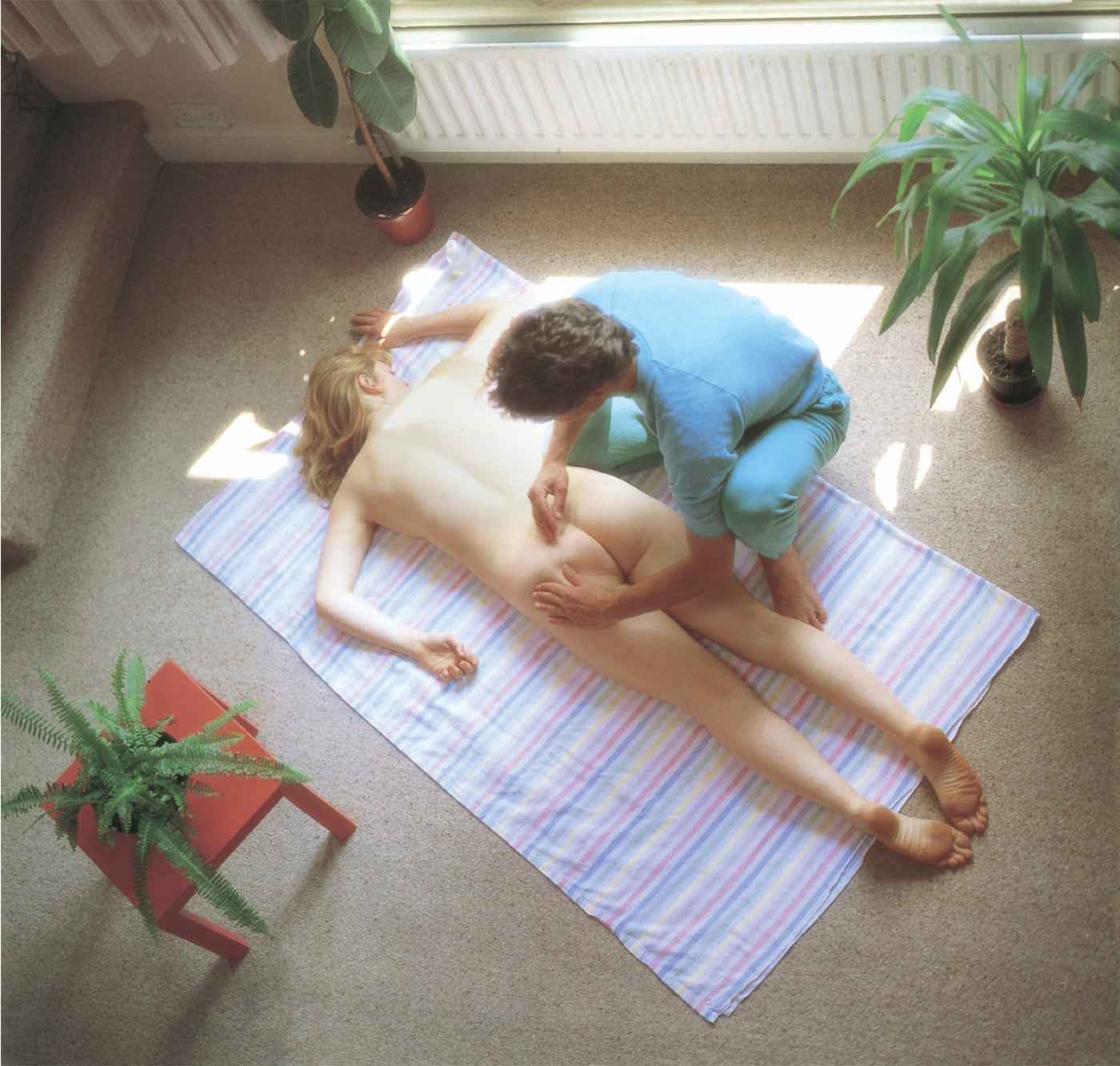
During the Middle Ages, in Europe, little was heard of massage, due to the contempt for the pleasures of the flesh. But it was revived in the sixteenth century, mainly through the work of a French doctor, Ambroise Par. Then, at the beginning of the nineteenth century, a Swede by the name of Per Henrik Ling developed what is now known as Swedish massage, synthesizing his system from his knowledge of gymnastics and physiology and from Chinese, Egyptian, Greek and Roman techniques. In 1813 the first college offering massage as part of the curriculum was established in Stockholm and from then on institutes and spas that included massage sprang up all over the continent. Today, the therapeutic value of massage has once more been recognized, and it continues to flourish and develop throughout the Western world, both among lay practitioners and professionals.
Next page


